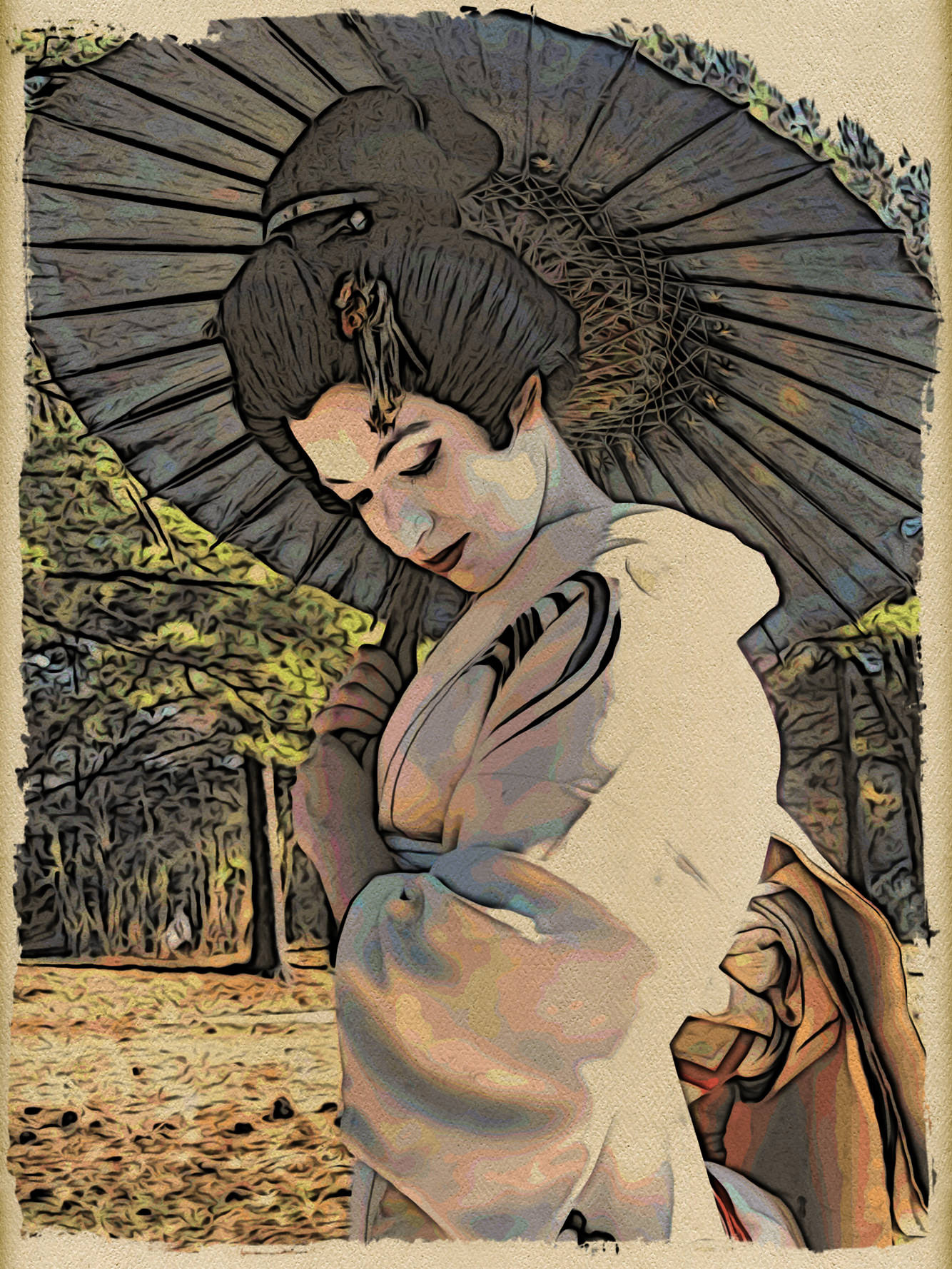

Printing wet makes more demands on the wood than oil base does. Printmaking in NY is very different from Mexico, and that is completely different from Japan… The shina (basswood) plywood from Japan is good not only because of its even grain, but because the glue between plys is very thin and waterproof. I paid $120 for my large soainomi (fan-beveled chisel), but I have had it for 20 years already! Good tools and good paper are such a pleasure, and actually much more affordable than, say, coated digital paper, computer software, etc. But my printmaking career (if one can call it that!) has been about making mokuhanga accessible, less precious, but without throwing out the baby with the bathwater. I do hesitate about the refinements, it can be overwhelming. I always talk about the history, and how the technique fits into Japanese culture. I always have fun, and people learn a lot. UPDATE: Dec.12, 2012: April Vollmer sent a note about the post above: “I hardly recognize myself your review is so flattering, but it is great to have someone describe the class. April Vollmer seems pleased with her students’ prints at Printmaking Center of NJįor more insights into the history and current state of Moku Hanga (also spelled mokuhanga) check out April Vollmer’s comprehensive essay in Art in Print.There is also a brief (4-minute) documentary video filmed by Dempsey Rice of April Vollmer at work, here. If you have the opportunity to study with April Vollmer, you can learn a great deal in a brief amount of time. We managed to do an edition of two-color prints with a single block of shina by carving the second color on the reverse side. There was one student who had no prior printmaking experience even he came away with successful prints. She also demonstrated the proper way to hold the paper, set up one’s workspace, and sharpen cutting tools. She claims she can print an edition of 25 in one morning and I believe her. April says she can print faster with a baren than printmakers who use a press.

Printing starts from a balanced standing position with a quick burst of energy using upper body strength.

Printing is not done with a press, but by rubbing the baren, a light weight disk, on the back of the paper. More of April’s tips: Your work table should be about navel level. Blue Vortex, woodblock, (detail) © 2005 April Vollmer The best paper, naturally, comes from Japan.
#Zinc use in moku hanga registration
One of the secrets of the art is cutting a precise registration corner and landing pad for the printing paper. (Wikipedia)Īpril showed us master Ukiyo-e prints by the likes of Morunobu and Utamaro before demonstrating her technique. Ukiyo-e print by Utamaro, circa 1800, printed with mica background.
#Zinc use in moku hanga free
McClain’s will send you a free sample find details here. If you have never used real shina ply, it is a joy to carve. April says the expense is due to the currency imbalance between the Japanese yen and the U.S. A small, 8 by 10 inch, piece of shina ply costs $6.35. The shina and carving tools are rather expensive. She uses the pigments from Art Guerra. For wood and carving tools she recommends McClain’s Printmaking Supplies. The wood we used was shina plywood, imported from Japan. 2 horizontal pattern prints based on nature © 2011 April VollmerĪpril suggests beginners might start printing with tube watercolors, but a more economical color can be had by mixing pigments. The pigments are water-based and do not stain clothes like oil-based relief printing inks. I learned there is no need to dress like a hobo to print Moku Hanga.

I came to class dressed in my ink-stained black shirt and raggedy painting jeans. I am used to the down and dirty printing of Oaxaca or Tom Huck’s Evil Prints. Moku Hanga is nothing like my prior printmaking experience. “Migration” Moku Hanga print © 2008 April Vollmer She has an extensive gallery of her prints online at. I know a bit about Japanese prints, but had never tried my hand at the traditional Moku Hanga woodblock printing technique. April, a great teacher and printmaker, has travelled to Japan to perfect her skills. KU Prof Elaine Cunfer and I took the class along with five other students.
#Zinc use in moku hanga how to
April Vollmer demonstrates how to carve registration notches on woodblock.Īpril Vollmer recently taught a two-day Moku Hanga workshop at the Printmaking Center of New Jersey.


 0 kommentar(er)
0 kommentar(er)
